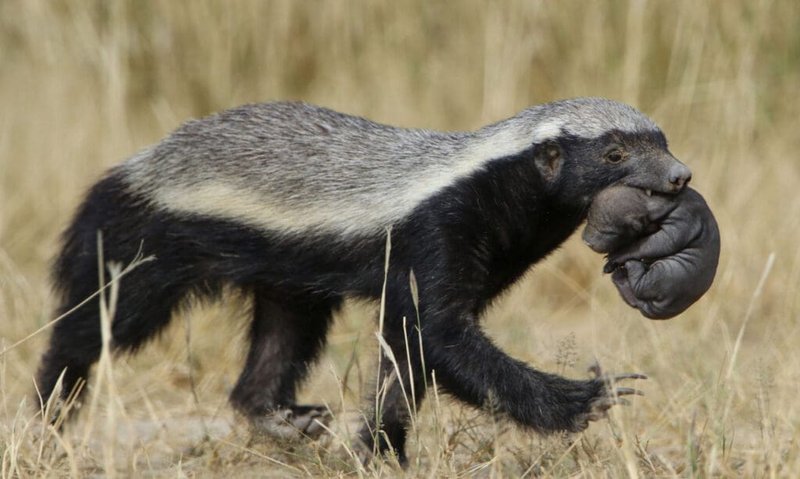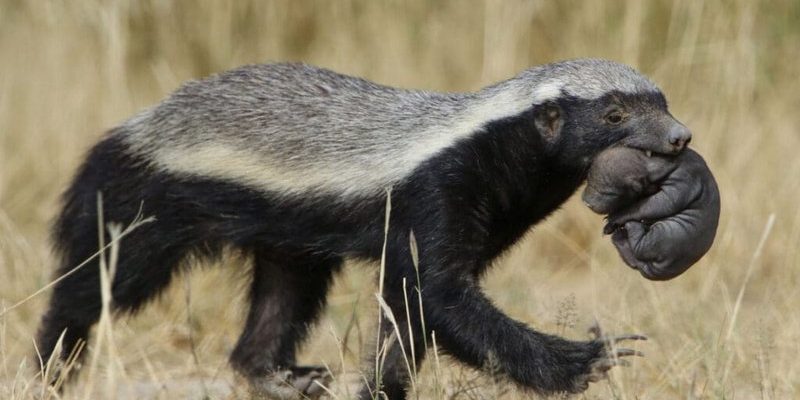
Imagine the honey badger as the ultimate underdog. Just like David in the classic story of David and Goliath, this little warrior goes head-to-head with creatures much more powerful than itself. It’s not just a savage fighter; it also embodies qualities like perseverance and fearless determination. So, let’s walk through the various ways this remarkable creature has found its way into our stories, beliefs, and even social media memes—starting with its representation in African folklore.
The Honey Badger in African Folklore
In many African cultures, the honey badger plays a central role in traditional stories and fables. Often depicted as crafty and clever, the honey badger is used to teach important life lessons. You might find it in tales where it outsmarts larger animals, showcasing its intelligence and resourcefulness. These stories often serve as metaphors for overcoming obstacles and not underestimating the seemingly weak.
For example, in some tales, the honey badger uses its wits to trick lions or leopards out of their food. Imagine a story where the badger pretends to be injured, luring the predator into a false sense of security, only to spring into action when the moment is right. This portrayal captivates listeners and emphasizes the idea that sometimes, brains can win out over brawn.
Additionally, these folktales often highlight the concept of community. The honey badger is often shown working with others, even different species, to achieve a common goal. This reflects a broader theme in many African cultures: the importance of collaboration, cleverness, and resilience in the face of adversity.
The Honey Badger in Modern Media
In our contemporary world, the honey badger has found a place not just in folklore but also in modern media. Thanks to viral videos and memes, this little mammal’s fierce reputation has exploded online. You might remember the viral “Honey Badger Don’t Care” video, which humorously showcased its bold nature. It quickly became a symbol of nonchalance and bravery, with the tagline capturing the essence of going after what you want, regardless of risks or obstacles.
These portrayals resonate with many, especially in stressful times. The honey badger’s fearless attitude serves as a reminder to tackle life’s challenges head-on, much like taking on a tough project at work or standing up for what you believe in. You could say that this little creature has become a modern-day hero for those who feel overwhelmed or intimidated by life’s hurdles.
Moreover, you’ll see that the honey badger’s image is often used in sports and branding. Teams might adopt it as their mascot, symbolizing grit and determination. So, whether you’re cheering for a sports team or scrolling through social media, the honey badger continues to represent a spirit of fearlessness and resilience.
The Honey Badger in Symbolism
Beyond tales and memes, the honey badger symbolizes various human qualities and values. It’s often associated with fearlessness, resilience, and a strong will. In many cultures, these traits are not just admired but celebrated. When someone faces challenges boldly and refuses to back down, they might be likened to a honey badger.
Let’s say you’re facing a tough situation at work. You might feel a bit like a honey badger when you decide to tackle a challenging project head-on, despite the risks. This symbolism extends to personal situations as well, where the honey badger’s attitude can inspire someone to stand strong in the face of adversity, echoing a powerful message of perseverance.
This representation also lends itself to the idea of challenging societal norms. The honey badger doesn’t conform to expectations and, instead, carves out its path. This trait encourages individuals to embrace their uniqueness and not be afraid to take risks, making it a beloved symbol in various movements advocating for courage and individuality.
The Honey Badger in Literature
Literature hasn’t shied away from incorporating the honey badger into its narratives. This creature often appears in children’s books and stories aimed at younger audiences, highlighting its feisty nature and the lessons it teaches. Children love stories where the honey badger triumphs over larger animals, showcasing not just bravery but also clever problem-solving skills.
Many authors use the honey badger as a character representing determination. For instance, in a story where a small honey badger dreams of finding the biggest honey stash, readers can follow along as it encounters challenges, learns from missteps, and ultimately succeeds. These tales promote a mindset of never giving up, which can resonate deeply with young readers who might be navigating their struggles.
Furthermore, the honey badger’s character sometimes serves as a contrast to other animals. Picture a story where a lazy lion underestimates the busy honey badger, only to learn a valuable lesson about hard work and persistence. These narratives encourage children to embrace their strengths, no matter how small they might seem.
The Honey Badger and Cultural Adaptations
As the honey badger travels across different cultures, its representation adapts to fit various societal values and lessons. While many cultures celebrate its fierceness, others might emphasize its more cunning aspects. For instance, in some Asian cultures, a similar small animal might be portrayed more as a trickster, leading to stories that focus on cleverness rather than bravery alone.
These cultural adaptations reflect how different societies view challenges and behaviors. In one culture, the honey badger’s strength might symbolize a warrior spirit, while in another, its intelligence might highlight the importance of cunning and strategy in overcoming obstacles.
This variation gives the honey badger a rich tapestry of meanings, making it a versatile symbol in storytelling. It encourages us to look beyond our own cultural lenses and appreciate how different communities draw lessons from the same creature.
The Honey Badger’s Ecological Importance
Beyond culture and folklore, the honey badger holds an important place in its ecosystem. As a versatile omnivore, it plays a role in controlling populations of various species, which helps maintain ecological balance. This connection to nature adds another layer to its representation in stories, often illustrating the relationship between humans, nature, and the lessons we can learn from the animal kingdom.
You might be wondering how this ecological aspect intertwines with cultural representations. Well, many folktales often emphasize the interdependence of all creatures, where the honey badger’s role is a reminder of the balance in nature. The stories teach respect for all beings and highlight how every component of an ecosystem, including the seemingly small honey badger, plays a vital role.
By recognizing the honey badger’s ecological significance, we can appreciate its representation not just as a fierce competitor, but as an essential part of the world we live in. It encourages us to think about conservation and the importance of protecting habitats, which enriches our cultural narratives further.
In conclusion, the honey badger stands tall—not just in the wild, but also in our stories, media, and symbolism. Its fierce nature, cleverness, and resilience make it a compelling character in many rich narratives across cultures. Whether it’s teaching us important life lessons through folklore, inspiring modern memes, or even reminding us of our connection to the natural world, the honey badger’s representation is as deep as it is varied. So, the next time you hear a story or see an image of this remarkable animal, you can appreciate the layers of meaning it carries with it into our hearts and minds.

